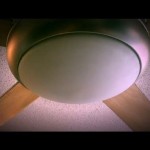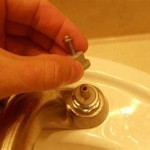How to Replace Bathroom Fan Housing Without Attic Access
Replacing a bathroom fan housing can be a challenging task, especially when attic access is limited or nonexistent. This situation often arises in older homes or those with complex roof structures. However, with the right tools, techniques, and a little patience, it's possible to tackle this project without resorting to extensive renovations. This article will guide you through the process of replacing a bathroom fan housing without attic access, providing detailed instructions and safety precautions.
1. Assess the Situation and Gather Materials
Before embarking on the replacement process, it's crucial to thoroughly assess the existing situation. Examine the fan housing, considering its condition, size, and the available space for maneuverability. Determine if the existing fan unit is wired to a GFCI outlet, as this will influence the wiring process. Once you have a good understanding of the situation, gather the necessary materials:
- New bathroom fan housing: Choose a unit with similar or slightly larger dimensions than the existing one. Ensure compatibility with your existing ductwork and electrical requirements.
- Screwdrivers: A variety of sizes will be needed for removing the old housing and installing the new one.
- Wire cutters and strippers: These are essential for safely disconnecting and connecting electrical wires.
- Electrical tape: Use this to insulate wire connections properly.
- Safety glasses: Protect your eyes from debris during the removal and installation process.
- Work gloves: Protect your hands from sharp edges and potential electrical hazards.
- Ladder: A stable, sturdy ladder is essential for accessing the fan housing safely.
- Level: Make sure the new fan housing is installed level for optimal airflow.
- Caulk gun and caulk: Use this to seal the new fan housing to prevent leaks.
2. Disconnecting the Old Fan and Housing
Begin by disconnecting the power supply to the old fan. This is crucial for safety and should always be your first step. Locate the circuit breaker controlling the fan and switch it off. Turn off the light switch connected to the fan if it's on the same circuit. Verify the power is off by testing the fan with a voltage tester. Once you're sure the power is off, you can safely proceed with the removal process.
Next, detach the old fan housing from the ceiling. This may involve removing screws, clips, or a combination of both. Use a screwdriver to remove any visible screws or clips. Carefully work your way around the housing, detaching it gradually. Once the fan housing is loose, you can gently pull it down, being careful not to damage any surrounding materials. Disconnect the electrical wires from the old fan motor, noting the color of each wire for reconnection later.
3. Installing the New Fan Housing
Now, it's time to install the new fan housing. Begin by securing the new housing to the ceiling using the screws and clips provided. Ensure the housing is level using a level, and adjust its position as necessary. Connect the electrical wires from the new fan to the existing wiring. Ensure the wires are correctly connected, matching the colors as previously noted. Secure the wire connections using electrical tape.
Before re-energizing the fan, carefully test the wiring for continuity and proper polarity. This can be done with a multimeter. Once you have confirmed the wiring is secure, you can turn the power back on at the breaker box. Test the fan by turning on the light switch and ensuring it operates correctly.
4. Finishing Touches and Safety Checks
After successfully installing the new fan housing, complete the final steps. Use caulk to seal any gaps or cracks between the housing and the ceiling to prevent leaks. Install the new fan grille, making sure it's properly secured. Finally, double-check all the connections to ensure they are secure and properly insulated.
Before concluding the project, conduct a final safety check. Run the fan for a few minutes to ensure it functions correctly, and check for any leakage or unusual noises. If everything appears to be in order, you can consider the project complete.
Remember, this is a general guide, and specific steps may vary depending on the fan housing model and your home's construction. Always refer to the manufacturer's instructions for your specific fan unit.
Replacing a bathroom fan housing without attic access can be challenging, but it is a manageable project for those with basic DIY skills and a willingness to take on a somewhat involved task. By following these steps carefully, you can ensure a safe and successful replacement of your bathroom fan housing, enhancing ventilation and improving the overall comfort of your bathroom.

How To Replace A Bathroom Exhaust Fan Without Attic Access 12 Step Guide Home Inspector Secrets

How To Replace A Bathroom Exhaust Fan Without Attic Access 12 Step Guide Home Inspector Secrets

How To Install A Bathroom Fan Without Attic Access

How To Replace A Bathroom Exhaust Fan Without Attic Access 12 Step Guide Home Inspector Secrets

How To Install A Bathroom Fan Without Attic Access Atkinson Inspection Services

Help Can T Remove Old Bathroom Exhaust Fan Housing Doityourself Com Community Forums

Make Your Bathroom Fan Like New Without Attic Access

Not Sure How To Remove Old Bathroom Fan Install New One Doityourself Com Community Forums

How To Install A Bathroom Fan Without Attic Access

How To Replace A Bathroom Exhaust Fan Without Attic Access 12 Step Guide Home Inspector Secrets
Related Posts







